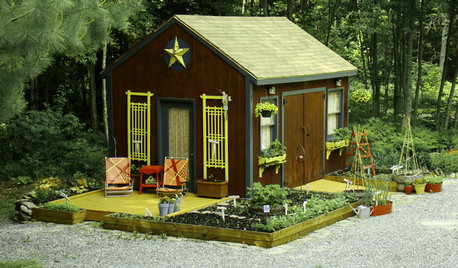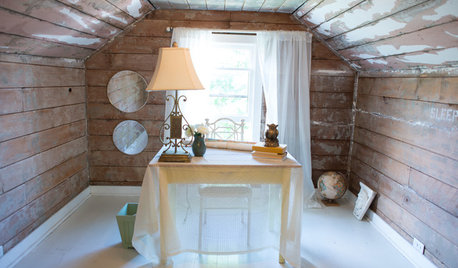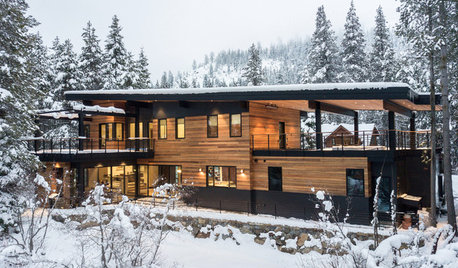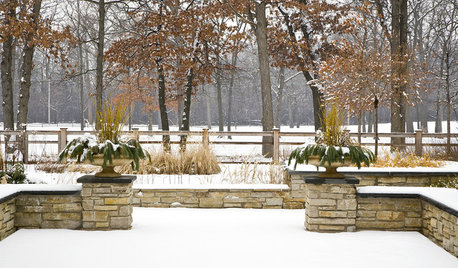how to safely dig up and pot for winter
ladygabe
14 years ago
Related Stories

GARDENING GUIDESGarden Myths to Debunk as You Dig This Fall and Rest Over Winter
Termites hate wood mulch, don’t amend soil for trees, avoid gravel in planters — and more nuggets of garden wisdom
Full Story
GARDENING AND LANDSCAPINGTake a Winter Walk on the Safe Side
Learn how to handle snow, ice and other cold-weather landscape factors to minimize falls and damage
Full Story
FALL AND THANKSGIVINGSimple Pleasures: A Cozy Home in Cold Weather
Stock up on these treats and essentials to make even blustery days and snowed-in time feel special
Full Story
BATHROOM DESIGN15 Ways to Warm Up Your Bathroom for Winter
Keep the chill away in body and spirit with everything from warm colors to high-end bathroom features
Full Story
BASEMENTSRoom of the Day: Family Digs In for a Chic New Kitchen and Dining Area
When a homeowner needs to free up kitchen space for her home bakery business, the only way to go is down
Full Story
GARDENING AND LANDSCAPINGDig This Garden Shed Makeover for Less Than $300
New paint, accessories and raised vegetable beds turn a drab outpost into a colorful charmer
Full Story
DECORATING GUIDESSimple Pleasures: Digging in the Attic
Sift through forgotten things to bring back memories and inspire stories — and maybe even yield a treasure or two
Full Story
MONTHLY HOME CHECKLISTSYour Winter Home Maintenance Checklist
Keep your home and yard safe and running smoothly as temperatures drop and activity moves indoors
Full Story
CONTAINER GARDENS5 Important Winter Tasks to Keep Container Gardens in Shape
Prevent cracked pots, blight spread and withered plants come spring by focusing on this essential maintenance now
Full Story
HOUSEKEEPINGOutdoor Home Prep to Do Before Hard Winter Hits
Avoid cracking, rusting and rotting during freezes by taking care of these tasks now
Full StorySponsored
More Discussions






peg919
tapla (mid-Michigan, USDA z5b-6a)
Related Professionals
Allen Landscape Architects & Landscape Designers · Ballwin Landscape Architects & Landscape Designers · Belmont Landscape Architects & Landscape Designers · Franconia Landscape Architects & Landscape Designers · Jackson Landscape Contractors · Middleton Landscape Contractors · Northbridge Landscape Contractors · Ringwood Landscape Contractors · Shaker Heights Landscape Contractors · Stony Brook Landscape Contractors · South Milwaukee Decks, Patios & Outdoor Enclosures · Highland Decks, Patios & Outdoor Enclosures · Hinsdale Fence Contractors · Malibu Fence Contractors · Acushnet Stone, Pavers & ConcreteladygabeOriginal Author
tapla (mid-Michigan, USDA z5b-6a)
ladygabeOriginal Author
tapla (mid-Michigan, USDA z5b-6a)
ccc1